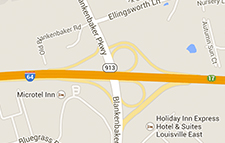Blog
Thursday August 13, 2015
Retaliation: When Management Strikes Back
posted by Jessica Durden
Tags: In the news
Retaliation: When Management Strikes Back
Ask anyone who has ever been fired from a job and they will tell you it is never a pleasant experience. The person may admit their performance slipped; they may admit to wrongdoing; or they may blame it on a personality conflict with a supervisor. But in the realm of employment lawsuits, a greater percentage of Plaintiffs are pursuing retaliation suits. Have you ever been asked to speak on behalf of a victim in an office conflict but feared reprisal from your management? Have you ever feared asking for the full measure of your statutory rights as an employee because you were afraid of blowback? Or have you ever had to blow the whistle in your job to report wrongdoing and feared immediate dismissal for doing the right thing?
In a retaliation case, the Plaintiff bears the initial burden to show that
- The Plaintiff engaged in a protected activity (for example: whistleblowing)
- The Plaintiff suffered “an adverse employment action” (for example: demotion, termination)
- There is a causal connection between that protected activity and the adverse action.
If a Plaintiff can demonstrate each of those three elements, they have created a legal presumption that the Plaintiff’s protected action was the cause of their demotion or firing (or other discipline). At that point, the employer has to show they had some legitimate reason—a non-discriminatory one—for taking action against the Plaintiff.
However, even if the employer has a reason for firing the Plaintiff that is legitimate on its face, the Plaintiff can still prevail by showing that the “legitimate” reason was merely a smokescreen. This can be accomplished by giving direct evidence of the retaliation (via emails or statements); evidence of a cover-up by the employer; evidence that others in the Plaintiff’s position did not suffer the same discipline as the Plaintiff (differential treatment); or evidence that the employer was inconsistent in their explanations for termination. Evidence may also be offered that the timing of the adverse employment action and the Plaintiff’s protected activity was suspicious or that the Plaintiff is the member of a protected class under Title VII of the Civil Rights Act of 1991.
If you or someone you know has been terminated or demoted after engaging in a protected activity at work, please contact Jessica Durden at 502-254-2110.
This summary was adapted from “Retaliation: The New Tsunami in Employment Litigation” by Peter M. Panken of EpsteinBeckerGreen, found in The American Law Institute’s Advanced Employment Law and Litigation 2015 supplement, pages 3-86.
Comments




